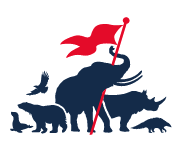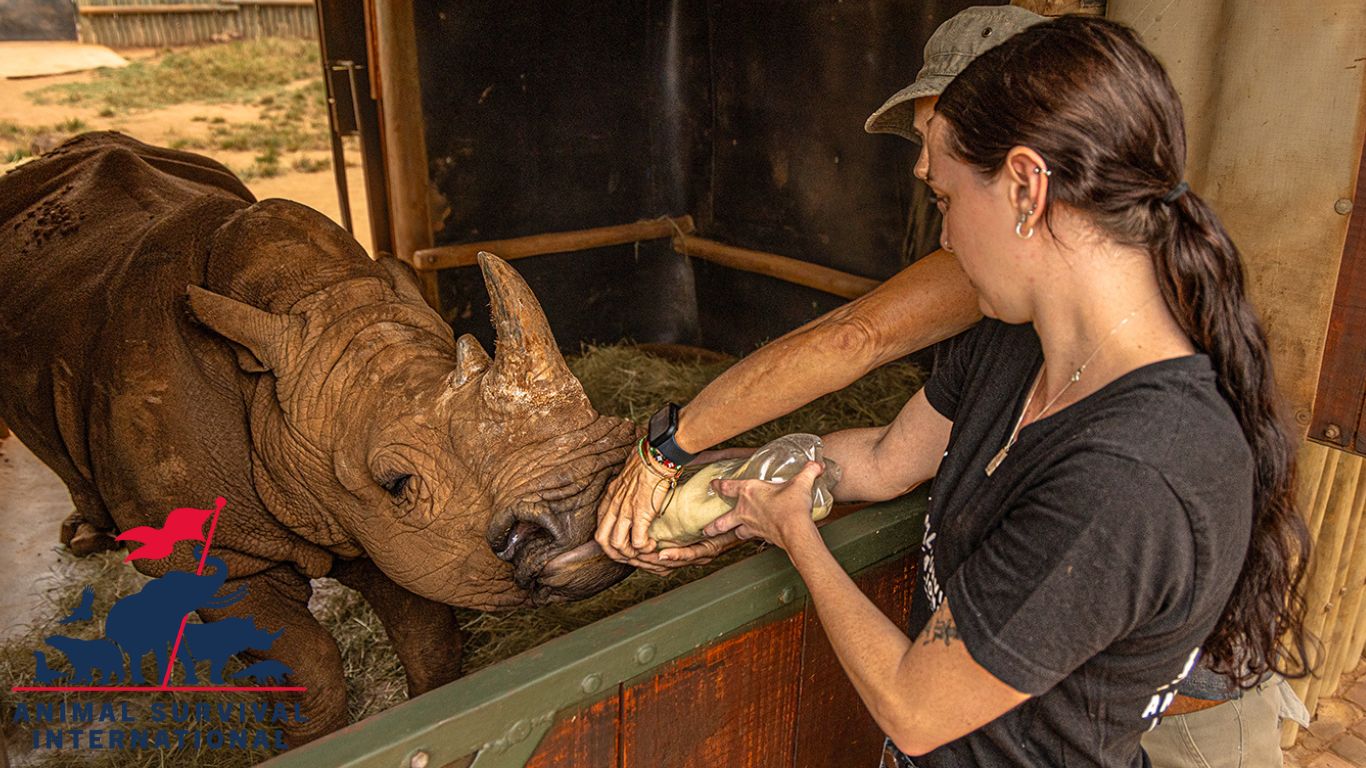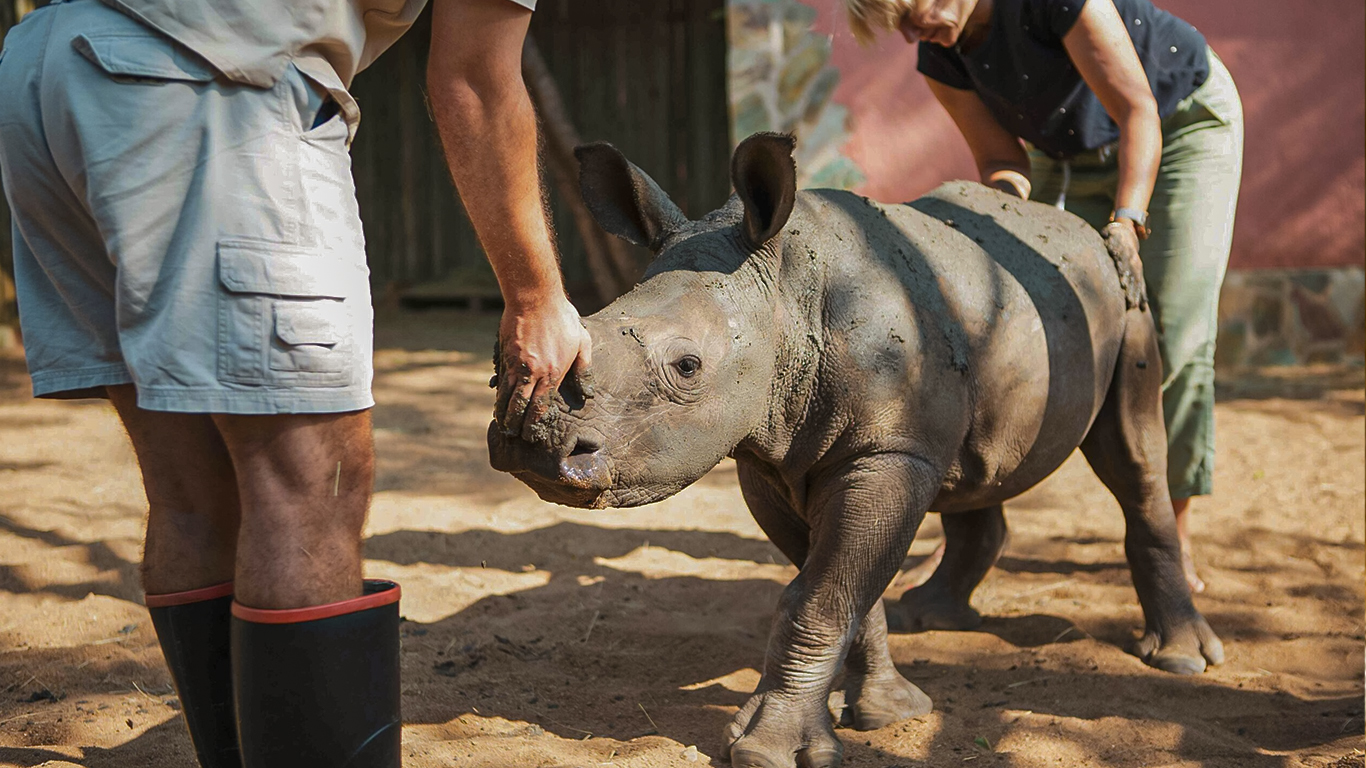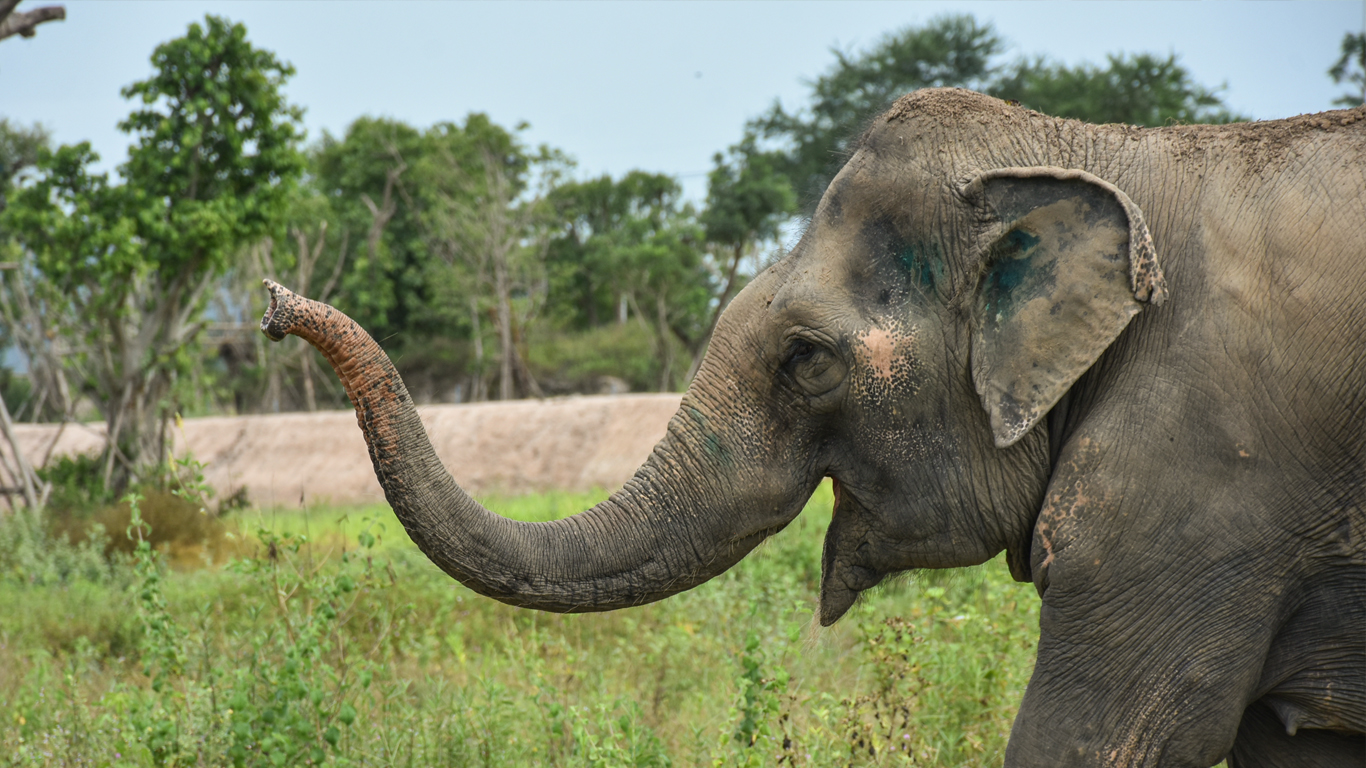Scientists predict that over the next five decades, humans will expand into more than half of the remaining wildlife habitats on Earth, resulting in significant biodiversity loss and a rise in human-wildlife conflict. Find out more here.
In short, it is not looking good for wild animals – which is why every animal, and every ecosystem, counts in the fight against habitat loss and species extinction.
Every day, we fight to preserve fragile species. This is how our supporters helped us save wild animals and the ecosystems they call home in August.
Zimbabwe, Lake Kariba 
Saving a baby elephant from a life-threatening snare
An elephant calf in Lake Kariba, estimated to be under two years old, was abandoned by her herd when a crude wire snare left her incapacitated. We had to help, fast.
We reached out to our supporters, and your generous response enabled us to fund an emergency snare removal operation with our partner, Kariba Animal Welfare Fund Trust (KAWFT). The animal was darted, the snare removed, and her wounds treated. She was also given antibiotics to prevent infection. A herd was spotted in the area, so rather than move the calf to a sanctuary, our team elected to leave her in the wild and carefully monitor her progress.
We are delighted to share that she is recovering very well and she has already been spotted socializing with other herds of elephants.
Laos, Vientiane 
Critically endangered baby gibbon rescued from brutal Asian wildlife trade
Sombad was just an infant when he was spotted being illegally sold online. Thousands of baby gibbons just like him are stolen from the wild every year to be eaten or sold as pets.
Fortunately, Sombad’s plight was brought to the attention of Lao authorities and our partner, Lao Conservation Trust for Wildlife (LCTW), and the infant was rescued in the nick of time.
We shared his tragic story with our supporters and hoped to raise enough for an appropriate enclosure for the animal who had lost everything – his mother, his safety, his wild home – and who deserves a second chance at a peaceful life. Unfortunately, we did not reach our fundraising goal, but hope to help in the future.
Kenya, Amboseli region 
Installing a smart deterrent system to keep lions safely away from communities
Kenya’s lion population has plummeted 83 percent in the past century, putting the species on the fast-track to extinction.
As climate change wreaks havoc on the country’s ecosystems, lions’ food sources are disappearing too. Hungry lions are forced to venture ever closer to humans in a search for food and, following their instincts, prey on livestock. Villagers are killing them in retaliation.
An innovative system, consisting of solar-powered lights that flash and blink, deters lions from livestock enclosures and encourages them to hunt for food elsewhere. By stopping them from preying on livestock, villagers have no excuse to kill the lions or other predators, saving countless lives.
Our ultimate goal is to install this system in 300 hotspots in the region. Through your donations, we will be able to begin installing the system, helping to save more lion lives.
Follow us on social for these stories and more…
 Twitter
Twitter  Instagram
Instagram  LinkedIn
LinkedIn  Facebook
Facebook
Help for hungry hippos! A pod of 100 starving hippos in Botswana is being fed, thanks to our supporters. See the photos here.
Construction of Nigeria’s first dedicated pangolin nursery and ICU is underway. The clinic will bring relief and hope to countless endangered pangolins. Here’s the progress so far.
Two lion cubs rescued from the frontlines of the Ukraine-Russia conflict are on the road to recovery. Here are the heartwarming photos.
From the News Desk
At ASI, we stay abreast of the latest wildlife conservation news so we can keep you informed on the most critical issues surrounding animals today.


We are pleased to tell you that, because of you, there is hope for wild animals and the places they call home. You can continue to support our work by donating, sharing our stories, and visiting our social media pages.











